Sat behind Manchester’s Oxford Road lies a small pub named the Old Abbey Taphouse. It’s the last remaining building from Greenheys, now part of Hulme. Greenheys was demolished in the 1960s and early 70s in what became known as the ‘slum clearances’ so when ex-residents of Greenheys visited the Taphouse to find out what had become of their old stomping ground, Rachele Evaroa, the pub’s landlady, came up with the idea of an event called Greenheys Remembered. Rachele got in touch with her friend John Piprani, an archaeology lecturer at the University of Manchester who offered to discover the location of the ex-residents’ homes using old Ordnance Survey maps and GPS technology so they could be shown where their houses once stood.
This project is a follow-up from a similar event held in the area in 2019, linking research at the university with the communities affected by it. The residents had so many fascinating stories from a bygone era of Manchester that the event attracted interest from the geography, history, linguistics, sociology and museum studies faculties. The students offered to film the residents telling their stories at the location of their former homes to use as valuable research material while old black-and-white photos of Greenheys would be displayed in the pub. Not only was Greenheys Remembered going to be a fascinating research project, it was also an opportunity for residents to meet again and simply, as Rachele put it, “have a nice time”.

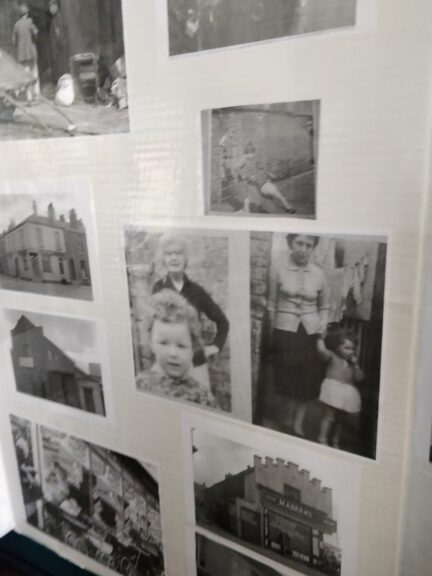
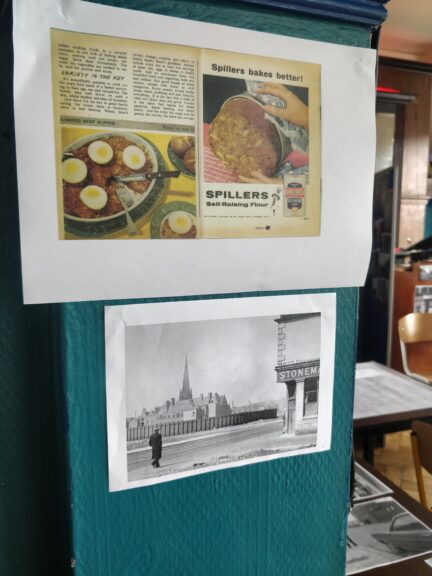
I visited Greenheys Remembered in the morning and already the Taphouse was full of people. Archaeology students crouched over laptops inputting postcodes into Digimap, residents from the Greenheys era catching up and John Piprani proudly overseeing the event. Surveying the display of old black-and-white photos of Greenheys in the 50s and 60s was Liz, who left the area when she was six years old. She told me her great-grandparents had stables for horses, goats and chickens and they paid for the doctor with eggs!
Self-sufficiency was a key component of the community where there was widespread poverty. I got speaking to an ex-resident, Hazel, now in her 80s, who said that her mother had bought their home in Greenheys for £100, and in the attic of the house they had eight to ten beds which they rented out to dockers working in Manchester. This was a fairly lucrative arrangement, they charged £4 per week and as part of the fee they made the workers breakfast, lunch and tea.
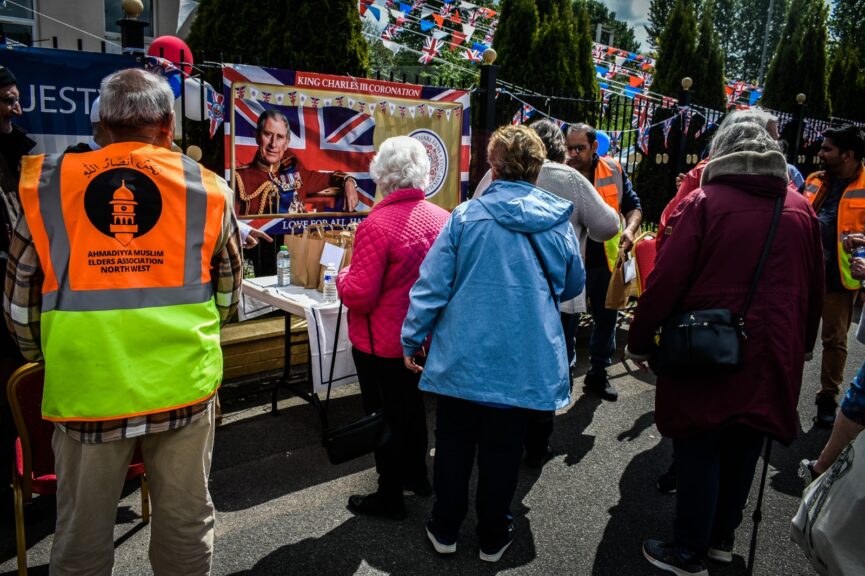
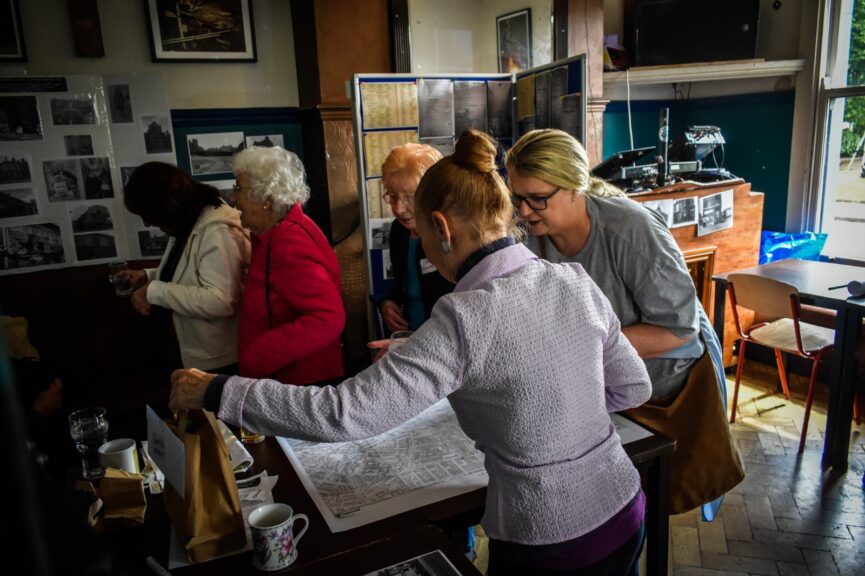

The houses, as well as being a source of income, acted as a makeshift health centre too. Shay, an ex- resident said that the street he lived on housed over thirty of his cousins and he was sent to stay with some of them when they contracted chickenpox because “It was better to get them as a kid, than as an adult”.
As well as the houses in Greenheys fulfilling practical needs, it was fun as well as functional. Although conditions were cramped, all the neighbours knew each other, there were youth clubs, working men’s clubs and large, wide streets for kids to play in. During the ‘walk rounds’ where residents were taken to the location of their demolished homes, Doug told us he lived near Meskie’s ice cream factory and his dad would give him a bowl and he’d take it there and ask for it to be filled with ice cream!
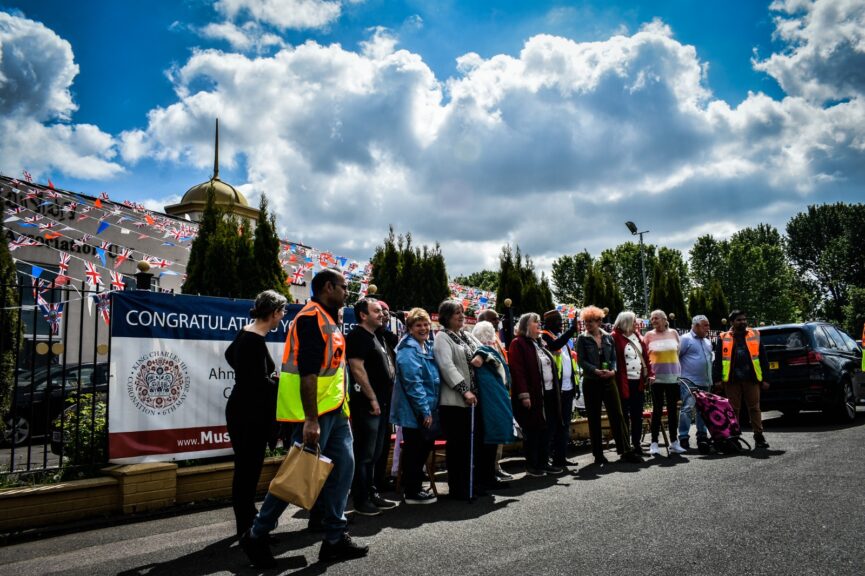
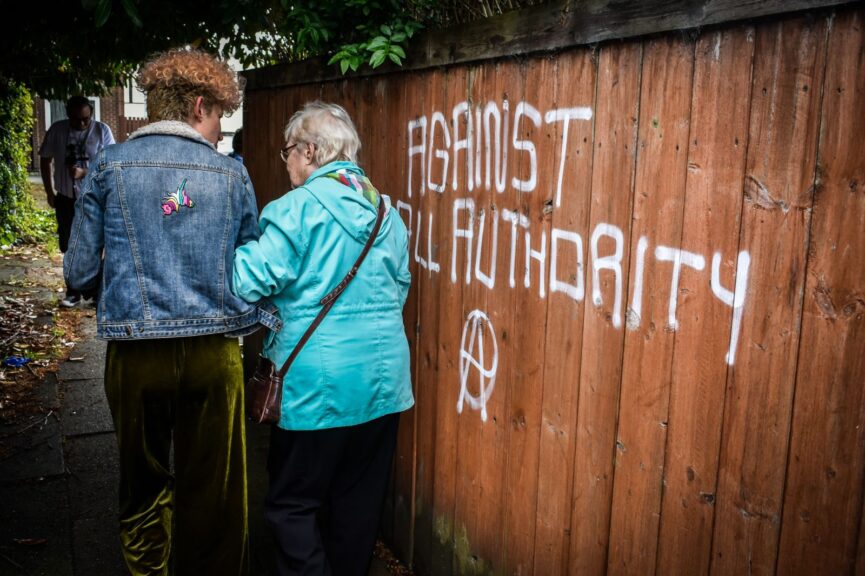
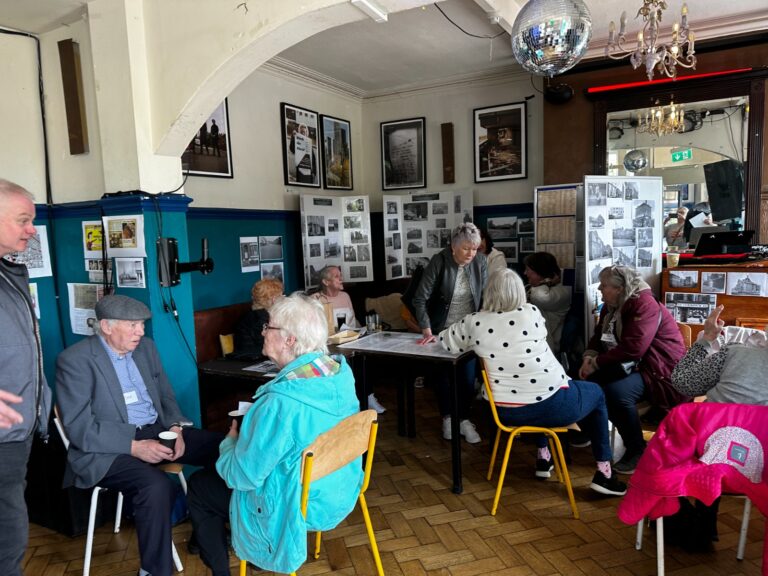
But not all memories were idyllic. Hazel told me of a time when after being bullied, she filled a woollen sock she’d knitted with marbles and hit the bully over the head with it! The blow knocked the bully unconscious and put her in hospital. Vicious, but effective, and as Hazel observed with a chuckle, “she never bullied me again”. Shay said of the two streets he lived on, Carter Street and Park Street, each housed Catholics or Protestants and that they regularly threw stones known as ‘duckers’ at each other.
While standing in the spot he used to live in, Doug told us how his dad tried to get rid of the cockroaches that infested the houses by taking up the floorboards and putting layers of lime underneath, but eight weeks later they returned. By demolishing these houses, the aim of the government was ostensibly to improve living conditions. However, a centralised heating system in Greenheys, which was apparently responsible for dispersing the cockroaches, could have been maintained or replaced instead of the houses being demolished all together. He also told us that his father was an American GI. The GIs who had their base in Burtonwood in Warrington regularly visited Greenheys during the war. It was an open secret amongst his family that his stepdad wasn’t his real dad. But Doug didn’t seem particularly bothered about sharing this story.
1950s vs. now
Drag the slider across the below image to see the streets that once lied beneath Manchester Science Park.
The clearances were aimed at tidying up an area that was overpopulated, with poor sanitation and a large selection of brothels. But the clearances were not welcomed by those moved out of the area. A van was parked at the end of each street and residents were given addresses of their new abodes in areas as disparate as Collyhurst, Handforth, Whitworth and Wythenshawe. Residents who’d lived together for generations were scattered all over Manchester, and those that stayed were put in the newly built Hulme Crescents, which were themselves cleared out in the early 1990s.
The new housing was poorly designed, and built on rubble which hadn’t been treated, and there were regular problems with rats. It also lacked any of the space which Greenheys had for people to socialise and connect with one another and while some of the aims of the clearances may have been honourable, little thought was put into the design of the flats and the effect rehousing would have on people’s lives.
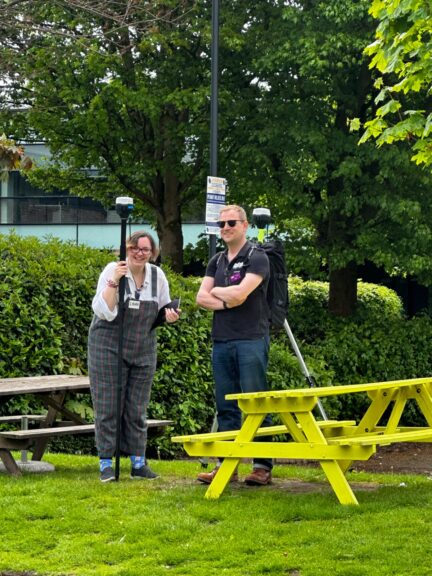
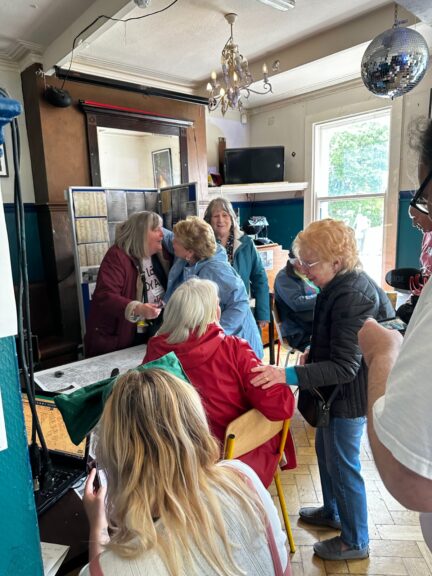
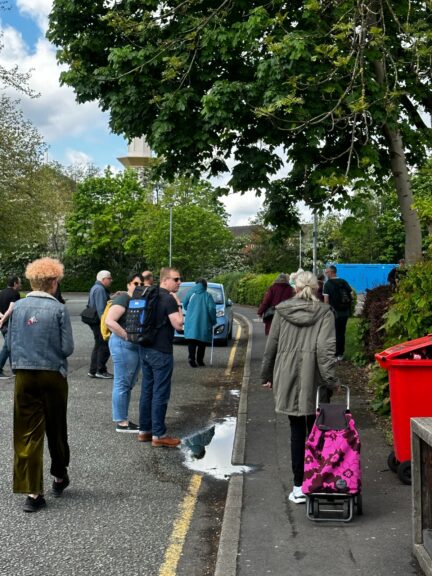
Time is a healer, obviously, and it’s easy to lament the destruction of Greenheys. But it had its fair share of issues too, there was a cluster of brothels in one specific area and fights broke out regularly. But it was a different time living through the rationing of WWII, with factories on the doorsteps of the workers and a far cry from Manchester in 2023.
While life in Greenheys was tough, the community spirit gave people an identity, support and a resilient mindset which was slowly eroded by exporting residents to different areas and putting them in modern, impersonal tower blocks giving rise to feelings of isolation with little opportunity to interact or engage with their neighbours. The prevailing attitude in Greenheys seemed to be ‘just get on with it’. Dwelling or reflecting too much wasn’t an option, making a hard life even harder.
Liz described the deck access flats in Hulme as a “concrete jungle” and summed up the attitude of most of the ex-residents by saying the demolition of the houses was “heartbreaking”. She said “with some TLC they could have been saved, they didn’t need razing to the ground and when they did, they took far more than just bricks”.
Sign up to The Meteor mailing list – click here
The Meteor is a media co-operative on a mission to democratise the media in Manchester. To find out more – click here
Feature Image: Liz Faye

Leave a Reply